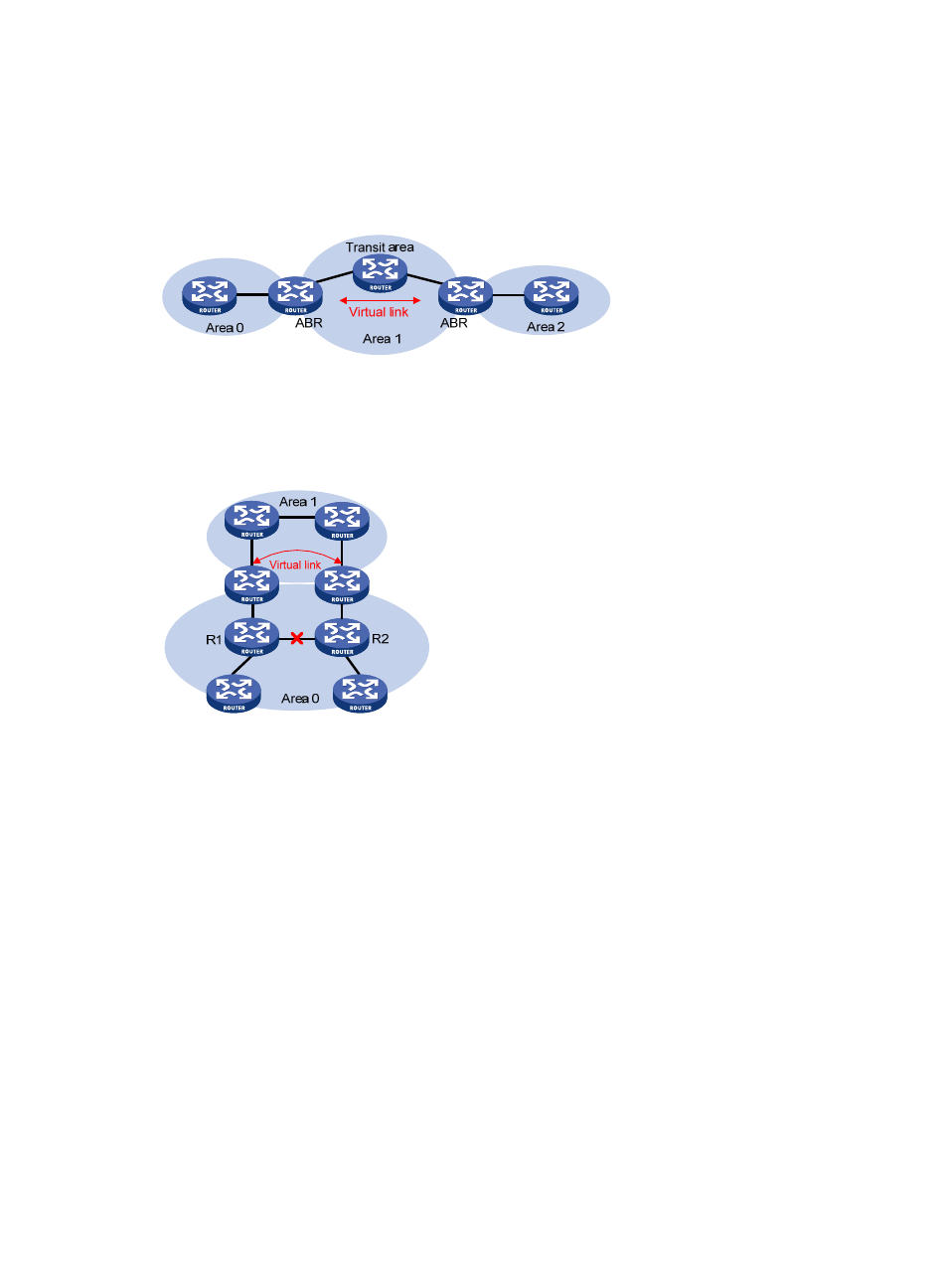Stub area – H3C Technologies H3C SR8800 User Manual
Page 79

63
A virtual link is established between two ABRs over a non-backbone area and needs to be configured on
both ABRs to take effect. The non-backbone area is called a transit area.
In the following figure, Area 2 has no direct physical link to the backbone area 0. You can configure a
virtual link between the two ABRs to connect Area 2 to the backbone area.
Figure 18 Virtual link application 1
Virtual links can also be used to provide redundant links. If the backbone area cannot maintain internal
connectivity due to the failure of a physical link, you can configure a virtual link to replace the failed
physical link, as shown in
Figure 19 Virtual link application 2
The virtual link between the two ABRs acts as a point-to-point connection. You can configure interface
parameters such as hello interval on the virtual link as they are configured on a physical interface.
The two ABRs on the virtual link unicast OSPF packets to each other, and the OSPF routers in between
convey these OSPF packets as normal IP packets.
Stub area
A stub area does not distribute Type-5 LSAs, so the routing table size and amount of routing information
in this area are reduced significantly. The ABR generates a default route into the area.
You can configure the stub area as a totally stub area, where the ABR advertises neither inter-area routes
nor external routes.
Stub area configuration is optional, and not every area is eligible to be a stub area. In general, a stub
area resides on the border of the AS.
When you configure a (totally) stub area, follow these guidelines:
•
The backbone area cannot be a (totally) stub area.
•
To configure an area as a stub area, the stub command must be configured on routers in the area.
•
To configure an area as a totally stub area, the stub command must be configured on routers in the
area, and the ABR of the area must be configured with the stub [ no-summary ] command.